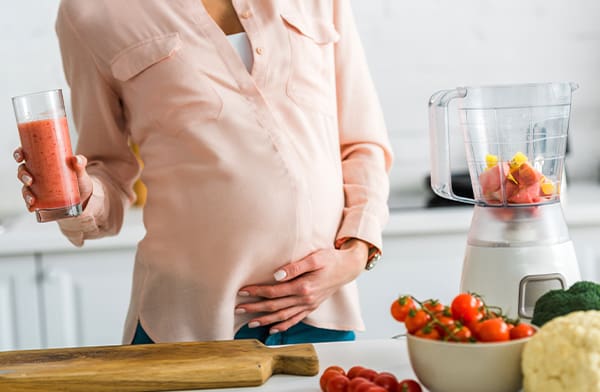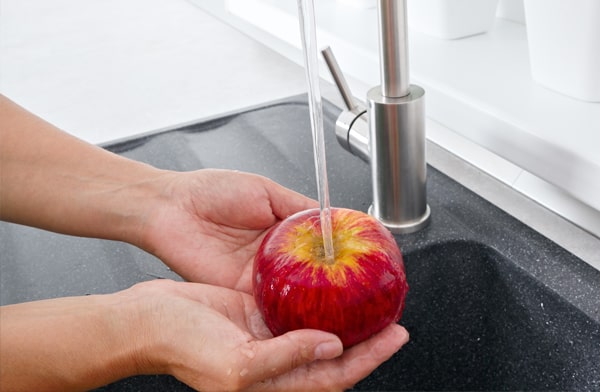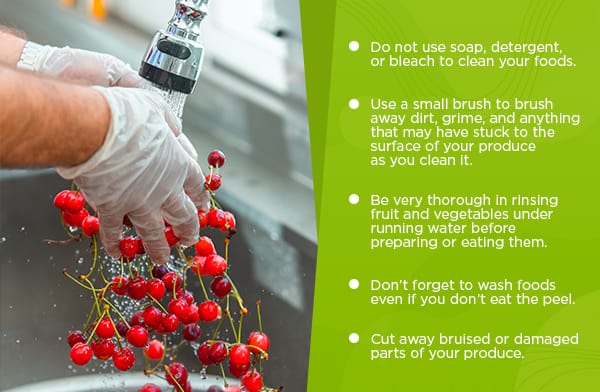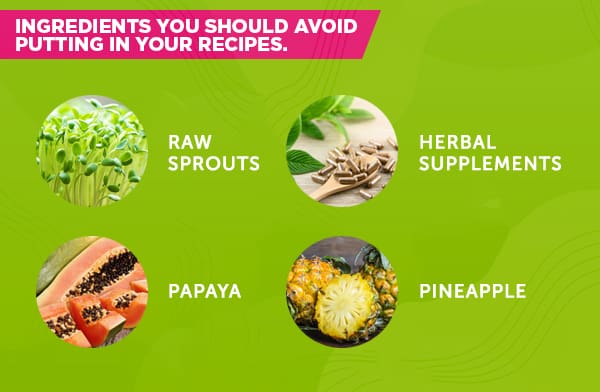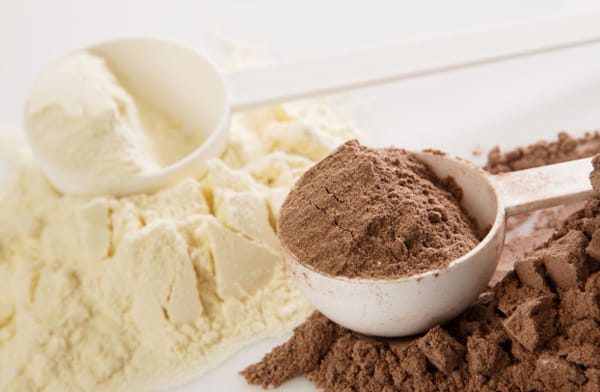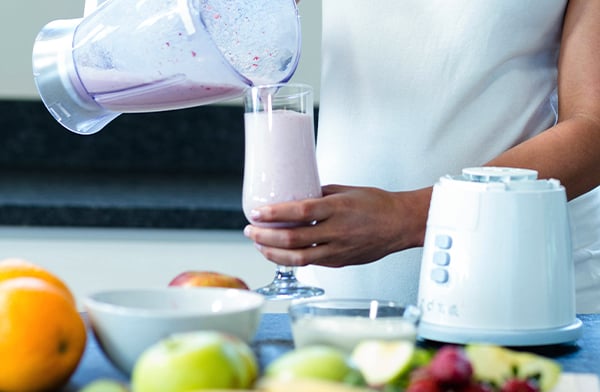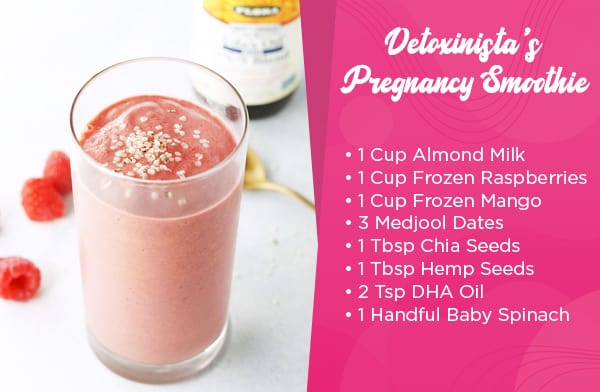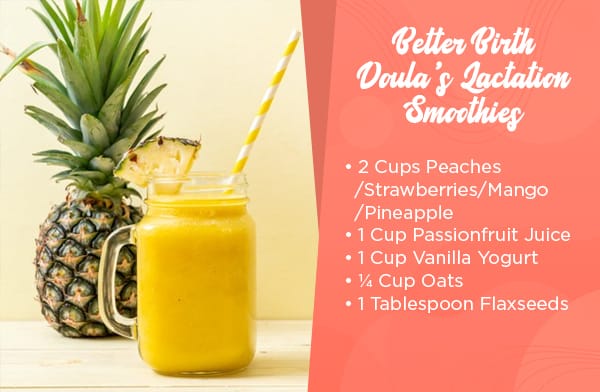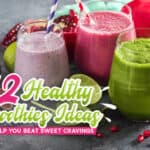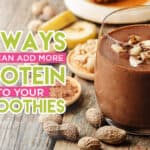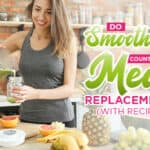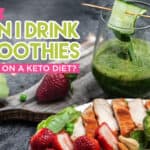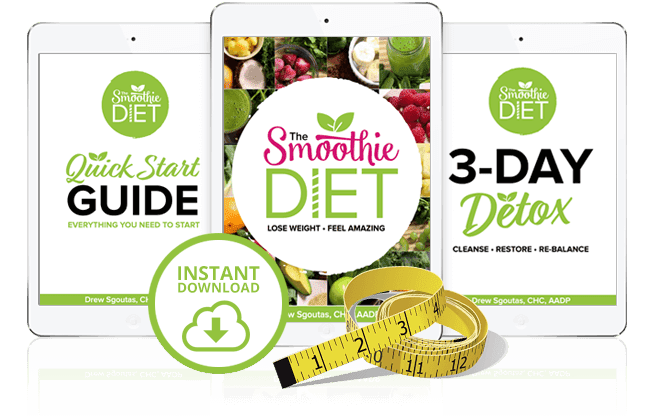Is It Safe to Drink Smoothies While Pregnant or Breastfeeding?
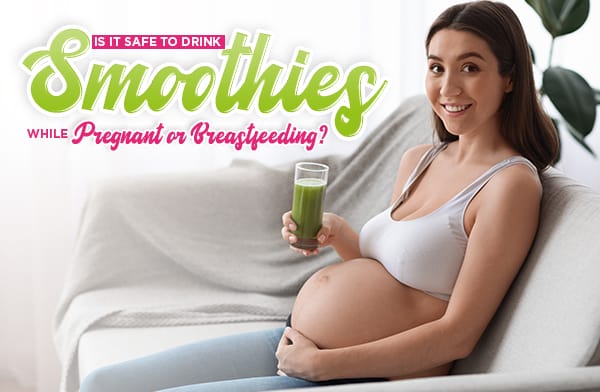
It may seem obvious whether or not smoothies are safe to drink while pregnant or breastfeeding. A lot of this depends on your knowledge of the subject, but the truth is, there’s a lot more to it than you might think.
If you’re thinking, “well, of course, it is, it’s a smoothie!” you may be right. However, not all smoothies are created equally, and you may not be aware of some smoothie ingredients that should be avoided.
When a woman is pregnant or breastfeeding, it’s very important for them to be cautious about what they eat and drink. Her body makes a lot of changes and goes into overdrive to support the baby, and as a result, many of the things she eats will reach the placenta and the child. This is why some things – like caffeine and alcohol – are so dangerous during pregnancy. Some ingredients should be skipped entirely, and others should be treated with caution.
Today, I’m going to highlight some common smoothie ingredients that can be potentially problem-causing, as well as share a few example recipes.
Let’s get started!
A Simple Answer
The simplest answer is yes. Smoothies are generally safe to drink during pregnancy and breastfeeding. There are some ingredients you should consider avoiding, however, and the mother must pay attention to food safety, health, and nutrition. That’s what the rest of this post will focus on; bringing some of these considerations to light and informing you so that you can make the best decision.
Stay tuned for the end of the post. I’ll also provide a couple of smoothies made for pregnant women and breastfeeding moms.
Consideration 1: Clean Ingredients
Raw fruits and vegetables can be contaminated with harmful bacteria. Think about how often you hear news stories about produce recalls — listeria in lettuce, salmonella in salads. You know what I mean. Unfortunately, contaminated food is far too common these days.
While a primary cause of contamination is how food is treated in bulk, it can still happen if you’re growing the food at home! Fecal contamination is the main cause, and gardens are great places for animals to hang out. Animals who decide to “do their business” in your garden – especially cats – can often be the biggest contributor to this problem.
Toxoplasma is one of the leading dangers from cats. But, even if you don’t have a cat, local strays or neighborhood cats contaminating your garden can cause problems.
To help reduce this risk, be thorough with food preparation for your smoothies.
- Do not use soap, detergent, or bleach to clean your foods. It’s difficult or impossible to wash away completely and can be as dangerous as the contamination for a baby.
- Use a small brush to brush away dirt, grime, and anything that may have stuck to the surface of your fruits and veggies as you clean them.
- Be very thorough in rinsing fruit and vegetables under running water before preparing or eating them.
- Don’t forget to wash foods – even if you don’t eat the peel! For example, bacteria on the surface of melon can be carried along with the knife you cut it with, contaminating the flesh inside.
- Cut out the bruised or damaged parts of your produce. It may seem like a waste, but any damage is a place bacteria can enter and thrive. You don’t want that stuff blended in with the rest of your drink.
This all applies to you whether you’re getting your produce from a grocery store, a community garden, or a home garden. Contamination is invisible, but it can potentially be very dangerous.
The FDA website has a 16 page PDF available on their website on pregnancy and food safety best practices. It has a ton of great information on proper food storage, cleaning, and avoiding foodborne illnesses. It’s well worth a read, and you may even want to print it out so that you have it readily available.
That said, properly-prepared fruits and veggies are not just safe to eat; they’re healthy and recommended. Don’t avoid them entirely out of fear of contamination!
Consideration 2: Ingredients to Avoid
Most women get a rundown of foods to avoid while pregnant from their obstetrician. That said, it never hurts to be thorough.
For example, with smoothies, there are a few key ingredients you should consider avoiding:
- Raw sprouts. Sprouts can be contaminated as seeds and have bacteria so deeply embedded in them that they’re impossible to clean. You can cook sprouts before adding them, so long as you’re thorough about it, but it’s best to avoid them.
- Herbal supplements. If you want to take an herbal remedy, make sure you know what it does, good and bad. It’s also really important to get approval from your doctor before taking one. Side effects can be worse for pregnant mothers, and some herbs can carry through breast milk to the baby. It’s probably a better idea to save the supplements for your recovery unless they are specifically recommended by your obstetrician.
- Under-ripe papaya can cause uterine contractions, which can induce miscarriage. It’s best to avoid this fruit entirely.
- A common and tasty ingredient, pineapple, has enzymes that can also cause uterine contractions. It is, however, safe once the baby has been born.
Avoiding the ingredients on the list is the best thing to do to keep yourself and your baby safe. If you’re looking for foods you can eat, consider fruits like watermelon, apple, banana, and oranges.
These may seem boring compared to pineapple and papaya, but they’re packed with vitamins and minerals, they’re healthy, and they’re easy to clean.
Consideration 3: To Protein or Not to Protein
Another concern you may have is if you should add a scoop of protein powder to your smoothies. A lot of smoothie recipes include this ingredient, but is it safe?
The simple answer is, again, yes: protein powder is safe. In fact, getting enough protein is critical to the development of the child! However, not all protein powder is safe.
Some considerations are:
- Avoid protein powders with chemicals, additives, or other ingredients in them. Many commercial protein powders are aimed at bodybuilders. This means they contain a lot of extra ingredients, some of which are natural and some are not. Avoid these; you want pure protein.
- Whey protein is good unless you have a dairy allergy or sensitivity. Whey protein is dairy-based and is fine if you don’t have dairy sensitivities, but it can be terrible for you if you do. When in doubt, leave it out. Protein powders with casein or lactose have dairy ingredients. Try pea protein instead.
- Avoid protein powder with flavors in it unless the flavorings are natural. Protein powder with cocoa powder in it is probably fine. Protein powder with “artificial flavor” could potentially be problematic.
- It would be best if you stayed away from protein powder that has caffeine in it. A lot – and I mean a lot – of protein powders are workout supplements in disguise. This means they may have added energy boosters or stimulants such as caffeine. That’s fine for lifting weights, but it’s not fine for developing a child. Keep an eye out for ways caffeine is hidden, too! Green Tea Extract and Yerba Mate are sure signs.
Additionally, make sure you’re getting protein powder from a reputable source. Protein powder is a supplement, not a food, which means it’s under a lot less regulation and oversight. Unfortunately, this means there are cases of protein powders packed with illegal stimulants or toxic ingredients every year.
Is it possible to get too much protein? Yes and no. Some studies suggest that having too much protein and too few carbs can slow down a child’s development. The levels are so skewed that you almost have to be on a keto diet for this to happen. That imbalance can also lead to gestational diabetes.
Just try to keep everything in balance. Talk to your obstetrician or a nutritionist specializing in pregnancy and early childhood for the best advice on your protein levels.
Consideration 4: Overall Nutritional Balance
All things in moderation, all things in balance. Your body has specific needs. You’ll have cravings for weird foods and combos, which is probably your body’s way of asking for specific nutrients. You can indulge it, to an extent, but be careful to keep yourself in balance!
Smoothies are great for this because you can pack in all of your nutrients without messing with your overall balance. Smoothies with nut butter, healthy fats, protein, and natural carbs are great. Plus, smoothies are very flexible so that you can fit a wide range of flavor profiles.
Feeling like citrus will make you sick today? Go for a chocolate and peanut butter smoothie. Think the heavy fats will make you hurl? Go with a lighter fruit-and-veg smoothie. The ability to blend in supplements, vegetables, or other nutrients that are missing from your diet is very convenient. You have a ton of options and flexibility here.
One thing to pay attention to is your blood sugar. Diabetes is a huge problem, especially with the average American diet. It’s an even bigger problem with the wild swings your body goes through during pregnancy. Keeping in communication with your Ob is important, but be careful with your smoothies! Too much sugar, especially with fruit that is very high in natural sugars, could be harmful to you and the baby.
Smoothie Recipes for Pregnant or Breastfeeding Mothers
Now that I’ve got all of the cautions out of the way – let’s go over a couple of recipes to give you some ideas. Here are some decent options that you can use for inspiration.
Detoxinista’s Pregnancy Smoothie
- 1 Cup of Almond Milk
- 1 Cup of Frozen Raspberries
- 1 Cup of Frozen Mango
- 3 Medjool Dates
- 1 Tbsp of Chia Seeds
- 1 Tbsp of Hemp Seeds
- 2 Tsp of DHA Oil
- 1 Handful of Baby Spinach
Mix this in your blender until it’s nice and smooth. Some people don’t care for the texture of Chia or Hemp. If that’s you, you can crush the seeds in a spice grinder or buy some powdered seeds. If that doesn’t sound appealing to you either, you can limit the amount that you’re adding to your smoothie or leave these seeds out entirely.
DHA is an omega-3 fatty acid that is great for your own health and the health of your child. It’s typically sourced from algae and can be found as a health supplement. As always, ask your physician if it’s safe for you to take. Luckily, this smoothie is wonderful without it if you need to leave it out.
Better Birth Doula’s Lactation Smoothies
- 2 Cups of Peaches/Strawberries/Mango/Pineapple
- 1 Cup of Passionfruit Juice
- 1 Cup of Vanilla Yogurt
- ¼ Cup of Oats
- 1 Tablespoon of Flaxseeds
You might notice this option has pineapple; that’s because you’re not at risk of miscarriage after birth. Since this is a lactation smoothie, it’s generally regarded as safe.
There are two other options on that page as well, including a smoothie with chocolate, peanut butter, and banana that is simply delicious.
What About the Father?
What about the other side of the equation? Is it safe for the spouse to have a smoothie?
Well, yes and no. Yes, because there isn’t anything that you can consume that will affect your spouse’s pregnancy. No, because the noise of a blender might aggravate your pregnant spouse, and you don’t want that!
Might I recommend a nice energy-boosting smoothie? If you can get away with it, the energy boost will be great to help you take care of your spouse and, when the time comes, your newborn.
Do you have any questions for me about enjoying smoothies as a pregnant or breastfeeding mother? What is your favorite recipe? Do you have any concerns about a specific ingredient that you’re thinking of using? Please share with the community in our comments section below! I’d love to hear from you and get a conversation going.

